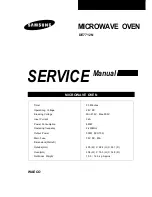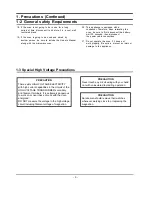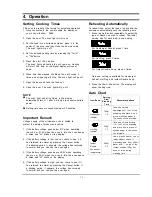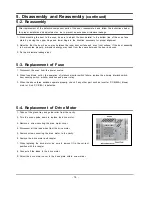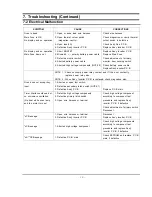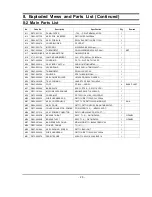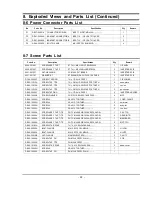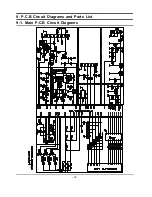
1. Precaution
Follow these special safety precautions. Although the microwave oven is completely safe during ordinary use, repair
work can be extremely hazrdous due to possible exposure to microwave radiation, as well as potentially lethal high
voltages and currents.
1-1 Safety precautions (
)
1. All repairs should be done in accordance with the
procedures described in this manual.
2. Microwave emission check should be performed
prior to servicing if the oven is operative.
3. If the oven operates with the door open:
Instruct the user not to operate the oven and contact the
manufacturer and the center for devices and radiological
health immediately.
4. Notify the Central Service Center if the microwave
leakage exceeds 5mW/cm
2
5. Make sure that there are no cabinet openings
through which people --particularly children --might insert
objects and contact dangerous voltages. Examples: Lamp
hole, ventilation slots.
6. Inform the manufacturer of any oven found to have
emission in excess of 5mW/cm
2
, make repairs to
bring the unit into compliance at no cost to owner
and try to determine cause. Instruct owner not to use
oven until it has been brought into compliance.
7. Service technicians should remove their watches
while repairing an MWO.
8. To avoid any possible radiation hazard, replace
parts in accordance with the wiring diagram. Also, use
only the exact replacements for the following parts:
Primary and secondary interlock monitor switch.
9. If the fuse is blown by the Interlock Monitor Switch:
Replace all of the following at the same time:
Primary, door sensing switch and power relay, as
well as the Interlock Monitor Switch. The correct
adjustment of these switches is described elsewhere
in this manual. Make sure that the fuse has the correct
rating for the particular model being repaired.
10. Some semiconductor ("olid state" devices
are easily damaged by static electricity. Such
components are called Elecrtrostatically
Sensitive Devices (ESDs). Examples include
integrated circuits and field-effect transistors.
Immediately before handling any
semiconductor components or assemblies,
drain the electrostatic charge from your body
by touching a known earth ground.
11. When checking the continuity of the
switches or transformer, always make sure
that the power is OFF, and one of the lead
wires is disconnected.
12. Components that are critical for safety
are indicated in the circuit diagram by shading,
or
.
13. Use replacement components that have
the same ratings, especially for flame
resistance and dielectric strength specifications.
A replacement part that does not have the
same safety characteristics as the original
might create shock, fire or other hazards.
14. Install or place this appliance only in
accordance with the installation instructions
provided.
15. Do not operate this appliance if it has a
damaged cord or plug, if it is not working
properly, or if it has been damaged or
dropped.
16. Do not immerse power cable in water.
17. Keep power cable away from heated
surfaces.
- 2 -
Summary of Contents for DE7712N
Page 17: ...9 P C B Circuit Diagrams and Parts List 9 1 Main P C B Circuit Diagrams 23 a b c d ...
Page 19: ...9 P C B Circuit Diagrams and Parts List Continued 9 3 Inverter P C B Circuit Diagram 25 f e ...
Page 20: ...9 P C B Circuit Diagrams and Parts List Continued 9 4 Drive P C B Circuit Diagram 26 g h ...

